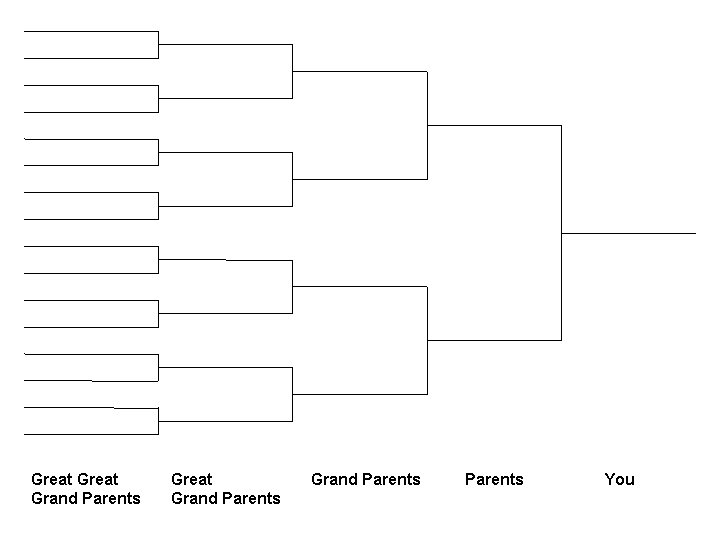
Who were your ancestors? Genealogy is a fascinating hobby for many people. Perhaps you heard your grandmother talk about her grandparents. If so, you may know more about your great great grandparents than most people. Sometimes family bibles will take records back a century or two - a few names, birth and death dates, and place of birth. Thatís not much but you can be pretty sure the people mentioned had arms, walked upright, and breathed air. You would be hard pressed to find out hair color, eye color, intelligence, height, weight, and personalities of your ancestors only a few generations back. Alex Haley's hit book and TV series Roots traced an African-American family back 10 generations to Africa. This case study asks you to think of your ancestors in some cases more than a hundred million generations ago!
How much of your genealogy can you fill in? Can you trace the source of your mitochondria?

A. The table that follows lists 13 anatomical or physiological characteristics of different groups of living organisms that are not characteristics of humans. However, they are characteristics that may have been possessed by distant human ancestors. Examine the list and consider each characteristic as a separate hypothesis about your own distant ancestry.
B. Without worrying about evidence for the moment, fill in your position on each hypothesis - agree, disagree, or uncertain.
C. In the final column, write a brief justification
for your position. When you are done, raise your hand to be put in a group.
Note: This will be a temporary group for today and next period.
|
Non-human Characteristic (Hypothesis) |
Results from initial responses |
|
||
|
|
|
|
||
| 1. Unicellular | ||||
| 2. Aquatic | ||||
| 3. Prehensile tail | ||||
| 4. Scales | ||||
| 5. Photosynthetic | ||||
| 6. Anaerobic | ||||
| 7. Knuckle walker | ||||
| 8. Egg laying | ||||
| 9. Asexual | ||||
| 10. Wings | ||||
| 11. Chitinous exoskeleton | ||||
| 12. Arboreal | ||||
| 13. Fossorial | ||||
A. Compare your individual responses for each hypothesis and fill in a duplicate table for the group to summarize the positions of individuals within the group.
B. Discuss those hypotheses that lack group consensus or show the greatest amount of uncertainty. See if the group can reach consensus, agree or disagree, on each hypothesis.
C. Turn in the group's table at the end of class.
A. At the end of class (9/6), identify those hypotheses that lack consensus and distribute them among the group members trying to match hypotheses with individual interests. Using resources available in the Morris Library and on the Internet, find out as much as you can about your hypothesis and be prepared to present a logical argument based on data supporting or refuting it.
Based on your discussions in class and further research as necessary, write a ~1-2 page argument based on evidence (provide references) that agrees, disagrees, or confirms uncertainty. Your finding will contribute to class discussion on September 11.